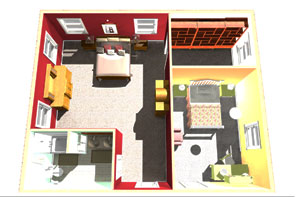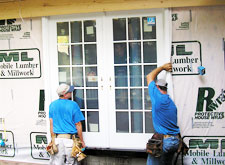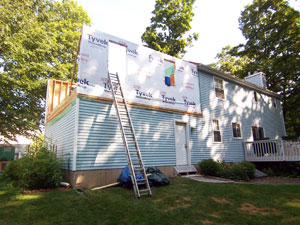
Building a bedroom addition can be a great way to add extra space and value to your home. However, it can also be a significant expense, especially if you're not careful. Fortunately, there are several ways to save money on building a bedroom addition without sacrificing quality or style. In this step-by-step guide, we'll share our top tips for cutting costs and making the most of your budget. From planning and preparation to construction and finishing touches, we'll walk you through the entire process of building a bedroom addition on a budget. Whether you're a seasoned DIYer or a first-time homeowner, this guide will help you save money and create the bedroom addition of your dreams.
II. Planning and Preparation
A. Create a budget
- Determine how much you can afford to spend
- Research the costs of materials and labor
- Factor in unexpected expenses and contingencies
B. Research materials and contractors
- Look for deals and discounts on materials
- Consider using recycled or salvaged materials
- Get quotes from multiple contractors
- Check references and reviews before hiring a contractor
C. Consider doing it yourself
- Determine if you have the necessary skills and experience
- Consider taking a DIY class or consulting with a professional
- Weigh the pros and cons of DIY vs. hiring a contractor
- Consider hiring a contractor for only parts of the project
D. Obtain necessary permits and inspections
- Research local building codes and regulations
- Obtain necessary permits and inspections
- Consider using a permit expediting service to save time and money
E. Set a timeline
- Determine a realistic timeline for the project
- Account for delays and unexpected setbacks
- Consider doing the project in stages to spread out costs
By carefully planning and preparing for your bedroom addition project, you can save money and avoid costly mistakes. Take the time to create a budget, research materials and contractors, obtain necessary permits and inspections, and set a realistic timeline for the project. These steps will help you stay on track and within budget as you move forward with your bedroom addition project.
III. DIY vs. Hiring a Contractor
 A. Consider the scope of the project
A. Consider the scope of the project
- Determine if the project is within your skill level and experience
- Consider the size and complexity of the project
- Evaluate the risks and potential problems associated with a DIY project
B. Weigh the pros and cons of DIY vs. hiring a contractor
- Pros of DIY: a. Potential cost savings b. Control over the project c. Personal satisfaction
- Cons of DIY: a. Potential for mistakes and errors b. Lack of experience and knowledge c. Time and effort required
- Pros of hiring a contractor: a. Professional expertise and experience b. Reduced risk of mistakes and errors c. Time savings
- Cons of hiring a contractor: a. Higher costs b. Less control over the project c. Potential for miscommunication or misunderstandings
C. Consider a hybrid approach
- Hire a contractor for the more complex aspects of the project
- Do the simpler tasks yourself
- Combine DIY and professional services to save money and ensure quality
D. Choose the right contractor
- Research and interview multiple contractors
- Check references and reviews
- Obtain a detailed contract and estimate
- Communicate clearly and regularly with your contractor
By weighing the pros and cons of DIY vs. hiring a contractor, you can make an informed decision about how to proceed with your bedroom addition project. Consider the scope of the project, the potential risks and benefits, and your own skills and experience. If you decide to hire a contractor, choose one carefully and communicate clearly to ensure a successful and cost-effective project.
IV. Materials and Supplies
A. Research materials and prices
- Determine the materials needed for the project
- Research different brands and types of materials
- Compare prices from multiple suppliers and stores
B. Consider using recycled or salvaged materials
- Look for local sources of recycled or salvaged materials
- Consider using reclaimed wood or other materials
- Consult with a professional to ensure quality and safety
C. Look for deals and discounts
- Check for sales and promotions at local suppliers and stores
- Look for clearance or closeout deals on materials
- Consider buying materials in bulk to save money
D. Don't overspend on unnecessary extras
- Stick to your budget and avoid unnecessary upgrades or additions
- Consider DIY options for smaller items or finishing touches
- Get creative with decor and furnishings to save money
E. Invest in quality where it matters
- Choose durable and long-lasting materials for important structural elements
- Invest in energy-efficient options for windows, doors, and insulation
- Consider the long-term cost savings of quality materials and products
By researching materials and suppliers, looking for deals and discounts, and making smart choices about what to invest in, you can save money on your bedroom addition project without sacrificing quality or safety. Consider using recycled or salvaged materials and avoiding overspending on unnecessary extras. Invest in quality where it matters most, and consult with a professional if needed to ensure the best outcome for your project.
 V. Permits and Inspections
V. Permits and Inspections
A. Determine the necessary permits
- Research the local building codes and regulations
- Determine which permits are needed for your project
- Obtain the necessary permits before beginning the project
B. Do your own research
- Understand the requirements and regulations for building in your area
- Consult with local authorities and building inspectors
- Review the necessary paperwork and applications
C. Hire a professional to handle the permitting process
- Consider hiring a contractor or architect to handle the permit process
- Be sure to obtain a detailed estimate and contract for these services
- Make sure the contractor is familiar with local building codes and regulations
D. Schedule inspections
- Schedule inspections at the necessary points in the project
- Be sure to obtain the necessary approvals and permits before continuing with the project
- Be present during inspections to answer any questions and address any concerns
E. Don't skip inspections
- Skipping inspections can result in safety hazards and costly mistakes
- Inspections ensure that the project is up to code and meets safety standards
- Failure to obtain necessary permits and inspections can result in fines and legal issues
By understanding the permitting process and requirements in your area, you can ensure a successful and cost-effective bedroom addition project. Consider hiring a professional to handle the permitting process if you're unsure or inexperienced. Don't skip inspections, as they are crucial for ensuring safety and compliance with local building codes and regulations. By following these guidelines, you can save money while still ensuring a high-quality and safe project.
VI. Construction
A. Prepare the site
- Clear the area of any debris or obstacles
- Make sure the site is level and stable
- Consider renting equipment to help with site preparation
B. Do as much work as you can yourself
- Consider taking on some of the simpler tasks, such as painting or demolition
- Consult with professionals or experienced DIYers before attempting more complex tasks
- Be realistic about your abilities and limitations
C. Hire the right contractor
- Interview multiple contractors and get detailed estimates and contracts
- Consider their experience, reputation, and references
- Choose a contractor who is licensed, insured, and experienced in bedroom addition construction
D. Use energy-efficient materials and techniques
- Choose energy-efficient windows, doors, and insulation
- Use techniques like passive solar design to save on heating and cooling costs
- Consider renewable energy options like solar panels or geothermal systems
E. Avoid overbuilding
- Don't build more space than you need
- Consider the long-term cost implications of a larger addition
- Stick to your budget and avoid overspending on unnecessary features or finishes
F. Maintain a clean and organized site
- Keep the site clean and organized to prevent accidents and improve efficiency
- Rent a dumpster or make arrangements for debris removal
- Encourage workers to maintain a safe and clean work area
By taking on some of the simpler tasks yourself and hiring the right contractor for the job, you can save money on construction costs without sacrificing quality or safety. Use energy-efficient materials and techniques to save on long-term heating and cooling costs. Avoid overbuilding and stick to your budget to keep costs under control. Finally, keep the site clean and organized to prevent accidents and improve efficiency. By following these guidelines, you can ensure a successful and cost-effective bedroom addition project.
VII. Finishing Touches
A. Paint and finish work
- Consider doing some of the finishing work yourself, such as painting or installing trim
- Choose paint and finishes that are durable and easy to clean
- Shop around for the best prices on materials
B. Flooring and lighting
- Choose flooring and lighting options that fit your budget and design goals
- Consider using energy-efficient lighting fixtures to save on electricity costs
- Shop around for deals and discounts on flooring and lighting materials
C. Furniture and decor
- Take advantage of sales and discounts when shopping for furniture and decor
- Consider buying used or refurbished furniture to save money
- Choose decor that fits your style and budget
D. Landscaping and outdoor features
- Consider adding landscaping or outdoor features to enhance the look and functionality of your addition
- Do some of the landscaping work yourself, such as planting shrubs or flowers
- Shop around for the best prices on landscaping materials and outdoor furniture
By taking a thoughtful and strategic approach to finishing touches, you can save money on your bedroom addition without sacrificing style or comfort. Consider doing some of the finishing work yourself, and shop around for the best prices on materials. Choose flooring and lighting options that fit your budget and design goals, and take advantage of sales and discounts when shopping for furniture and decor. Finally, consider adding landscaping or outdoor features to enhance the look and functionality of your addition, and do some of the work yourself to save on labor costs. By following these guidelines, you can create a beautiful and functional bedroom addition that fits your budget.
VIII. Maintenance and Upkeep
A. Regular cleaning and maintenance
- Create a cleaning and maintenance schedule to keep your addition in good condition
- Regularly inspect the addition for signs of wear and tear, and address any issues promptly
- Keep the addition free of clutter and debris to prevent damage
B. Energy efficiency
- Invest in energy-efficient appliances and fixtures to save money on utilities
- Seal windows and doors to prevent drafts and energy loss
- Consider adding insulation to the walls and ceiling to improve energy efficiency
C. Repairs and renovations
- Plan ahead for repairs and renovations that may be necessary in the future
- Set aside a budget for these expenses to avoid financial surprises
- Consider doing some repairs and renovations yourself to save on labor costs
D. Seasonal upkeep
- Prepare your addition for seasonal changes, such as winter weather or extreme heat
- Take steps to prevent damage from weather-related events, such as flooding or wind damage
- Inspect the addition regularly for signs of seasonal wear and tear, and address any issues promptly
By maintaining your addition regularly and investing in energy-efficient appliances and fixtures, you can save money on utilities and prevent costly repairs down the line. Plan ahead for future repairs and renovations, and set aside a budget for these expenses to avoid financial surprises. Finally, take steps to prepare your addition for seasonal changes and prevent weather-related damage. By following these guidelines, you can keep your bedroom addition in excellent condition for years to come.
IX. Conclusion
Building a bedroom addition can be a significant investment, but with careful planning and attention to detail, it is possible to save money without sacrificing quality or safety. By following the steps outlined in this guide, you can save money on materials, labor, and ongoing upkeep while still creating a beautiful and functional space for your home.
Remember to plan and prepare thoroughly, consider your options for DIY vs. hiring a contractor, choose materials and supplies wisely, obtain the necessary permits and inspections, and invest in regular maintenance and energy-efficient features. With these strategies in mind, you can build a bedroom addition that meets your needs and fits your budget.
By taking a methodical and thoughtful approach to building your addition, you can ensure that it is a valuable and enjoyable addition to your home for years to come.

